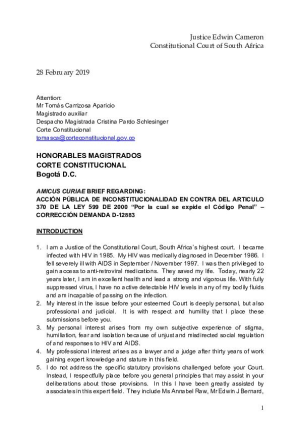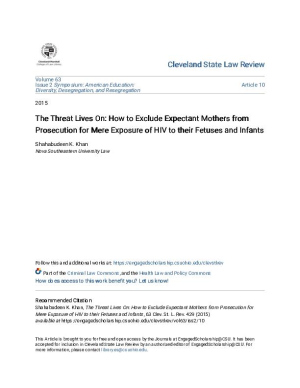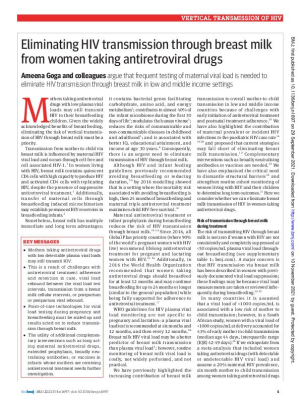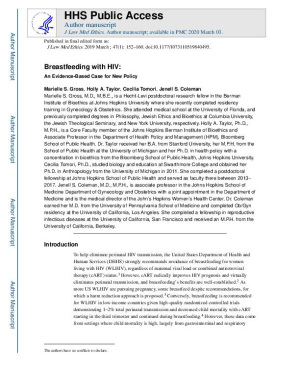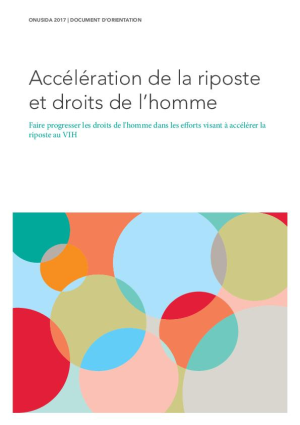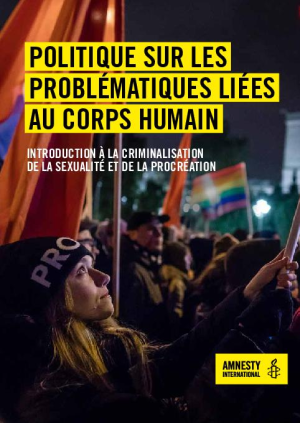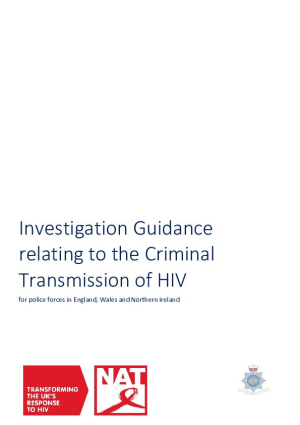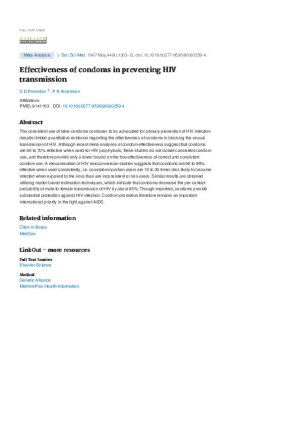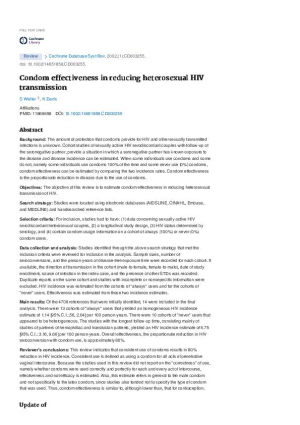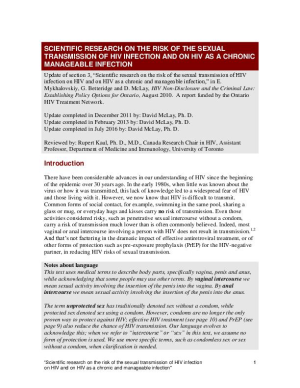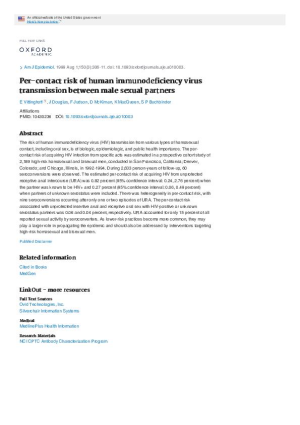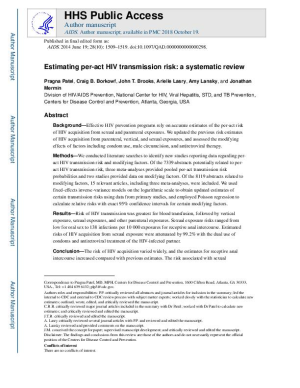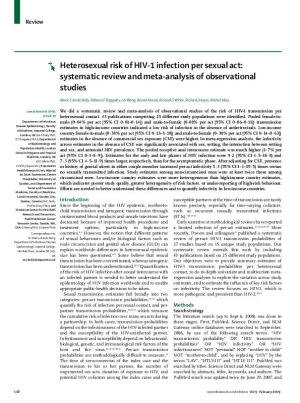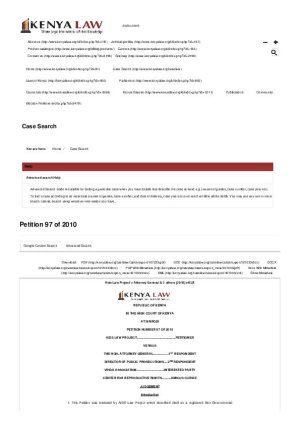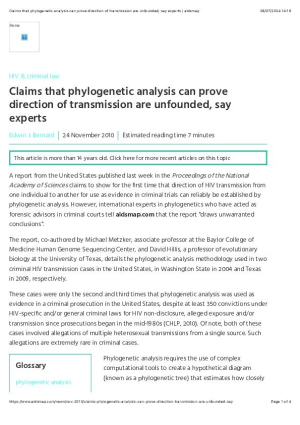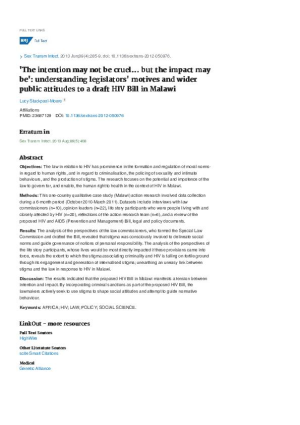Community Insights in Phylogenetic HIV Research: The CIPHR Project Protocol
Protocol for engaging community activists living in Nairobi, Kenya in a knowledge exchange process: Drawing upon a community-based participatory approach, the CIPHR project will (1) explore the possibilities and limitations of HIV molecular epidemiology for key population programmes, (2) pilot a community-based HIV molecular study, and (3) co-develop policy guidelines on conducting ethically safe HIV molecular epidemiology. Critical dialogue with activist communities will offer insight into the potential uses and abuses of using such information to sharpen HIV prevention programmes. The outcome of this process holds importance to the development of policy frameworks that will guide the next generation of the global response.
Constitutional Court of South Africa – Amicus Curiae Brief – Justice Edwin Cameron
Amicus Curiae Brief regarding the Public Action of Constitutional Challenge against Article 370 of Law 599 from 2000.
Redefining Risk: Judicially Heightened Risk Standards and HIV-Specific Criminal Laws
This Note explains the risk of HIV transmission associated with certain behaviours, lays out variations in HIV-specific criminal laws, and examines how those laws are applied. It also examines the courts’ reasoning in Rhoades and Hogg as well as analyzes the legal and policy problems that these laws create, the challenges to amending or repealing the laws.
The Threat Lives On: How to Exclude Expectant Mothers from Prosecution for Mere Exposure of HIV to their Fetuses and Infants (2015)
This article articulates how the threat of prosecution of mothers living with HIV who expose or transfer the virus to their foetuses or newborn will discourage and scare women away from seeking proper medical treatment instead of encouraging HIV treatment and prevention. It also explores how HIV-specific criminal transmission laws in the United States could hamper and stifle the progress in prevention and treatment of vertical transmission. It concludes by proposing a model for change in addressing these HIV-specific criminal transmission statutes.
- Alternative links
- Traduction française automatisée
Eliminating HIV transmission through breast milk from women taking antiretroviral drugs (2021)
Ameena Goga and colleagues argue that frequent testing of maternal viral load is needed to eliminate HIV transmission through breast milk in low and middle income settings.
Breastfeeding with HIV: An Evidence-Based Case for New Policy (2019)
A review of the benefits and risks of breastfeeding for mothers living with HIV, and recommendations that the United States Department of Health and Human Services (DHHS) include breastfeeding as an option for people living with HIV on suppressive antiretroviral therapy who maintain an undetectable viral load.
Judgment C-248/19 – Lawsuit challenging the constitutionality of Article 370 of Law 599 of 2000 “Whereby the Criminal Code is issued.”
The decision of the Constitutional Court of Colombia to eliminate section 370 of the criminal code that criminalised the transmission of HIV.
Accélération de la riposte et droits de l’homme – Faire progresser les droits de l’homme dans les efforts visant à accélérer la riposte au VIH
Explique pour la première fois (à la page 23) que la transmission de la mère à l’enfant ne doit pas être criminalisée lorsqu'un pays demande une validation pour l’élimination de la transmission du VIH de la mère à l’enfant. C'est la première fois dans l'histoire de la santé publique que les garanties des droits de l'homme sont considérées comme une condition préalable à la validation de l'élimination de la maladie.
Politiques sur les problématiques liées au corps humains: Introduction à la criminalisation de la sexualité et de la procréation
Le document d'introduction expose dans le détail les principaux domaines de préoccupation ainsi que le préjudice infligé aux droits humains de chacun-e et à la santé de la société tout entière par la criminalisation tant directe qu'indirecte.
Investigation Guidance relating to the Criminal Transmission of HIV for police forces in England, Wales and Northern Ireland
Sets out how prosecutors should deal with cases where there is an allegation that the suspect/defendant has passed an infection to the complainant during the course of consensual sexual activity. States the criminality of this offending lies in the mens rea, so relevant offences will be difficult to prove to the requisite high standard, to satisfy the evidential stage of the Code test and in the court itself. Also warns of other sensitivities: the relationship between the criminal law and consensual sexual behaviour is delicate.
Effectiveness of condoms in preventing HIV transmission
Recent meta-analyses of condom effectiveness suggest that condoms are 60 to 70% effective when used for HIV prophylaxis. A re-examination of HIV seroconversion studies suggests that condoms are 90 to 95% effective when used consistently, i.e. consistent condom users are 10 to 20 times less likely to become infected when exposed to the virus than are inconsistent or non-users. Similar results are obtained utilizing model-based estimation techniques, which indicate that condoms decrease the per-contact probability of male-to-female transmission of HIV by about 95%.
Condom effectiveness in reducing heterosexual HIV transmission
Review of 14 rigorous studies to re-estimate condom effectiveness in reducing heterosexual transmission of HIV. Finds consistent condoms use results in an 80% reduction in HIV incidence, i.e 80% less than the particular act without condoms. Consistent use is defined as using a condom for all acts of penetrative vaginal intercourse.
Scientific research on the risk of the sexual transmission of HIV infection and on HIV as a chronic manageable infection
Explains HIV transmission risk with reference to numerous studies, including a chart summarising per-act risk estimates for transmission of HIV during different types of sexual intercourse.
(update of original chapter in E. Mykhalovskiy, G. Betteridge and D. McLay, HIV Non-Disclosure and the Criminal Law: Establishing Policy Options for Ontario)
Per-contact risk of human immunodeficiency virus transmission between male sexual partners
Reports on follow up from prospective cohort study of gay and bisexual men. Findings include estimates of risk from unprotected anal intercourse and oral sex.
Estimating per-act HIV transmission risk: a systematic review
Reports analysis of recent studies on per-act HIV transmission risk and modifying factors. Includes risk associated with blood transfusion, vertical exposure, sexual exposures, and parenteral exposures. Finds the risk of HIV acquisition varied widely, with risk from sexual transmission substantially reduced by combined use of condoms and antiretroviral treatment of HIV-infected partners.
Per-contact probability of HIV transmission in homosexual men in Sydney in the era of HAART
Reports data from a longitudinal cohort study of community-based HIV-negative homosexual men in Sydney, Australia. Reports risk of infection through unprotected anal intercourse.
Heterosexual risk of HIV-1 infection per sexual act: systematic review and meta-analysis of observational studies
Reports findings from systematic review and meta-analysis of observational studies of the risk of HIV-1 transmission per heterosexual contact (43 publications based on 25 studies).
Judgment On Section 24 Of The HIV and AIDS Prevention and Control Act
Outlines the AIDS Law Project’s suit (Petition No. 97 of 2010) against the Attorney General and Director of Public Prosecutions regarding the constitutionality of section 24 of HIV and AIDS Prevention and Control Act. The court found that some terms were too broadly defined and that Act contravened Kenya’s constitution.
Claims that phylogenetic analysis can prove direction of transmission are unfounded, say experts
Questions the merits of a phylogentics article published in Proceedings of the National Academy of Sciences, and warns against relying on its conclusions.
HIV forensics: pitfalls and acceptable standards in the use of phylogenetic analysis as evidence in criminal investigations of HIV transmission
Considers the usefulness of phylogenetic analysis in HIV criminal trials, finding that phylogenetic analysis cannot prove that HIV transmission occurred directly between two individuals. Explains that phylogenetic analysis can exonerate individuals by demonstrating that the defendant carried a virus strain unrelated to that of the complainant.
- Alternative links
- Français, Español, Русский, HIV Medicine Wiley Online Library
‘The intention may not be cruel… but the impact may be’: understanding legislators’ motives and wider public attitudes to a draft HIV Bill in Malawi
Participatory Action Research undertaken during consideration of new HIV criminalisation laws in Malawi in 2010/11 indicated the proposed bill manifests a tension between intention and impact. By incorporating criminal sanctions as part of the proposed HIV bill, the lawmakers actively seek to use stigma to shape social attitudes and attempt to guide normative behaviour.

